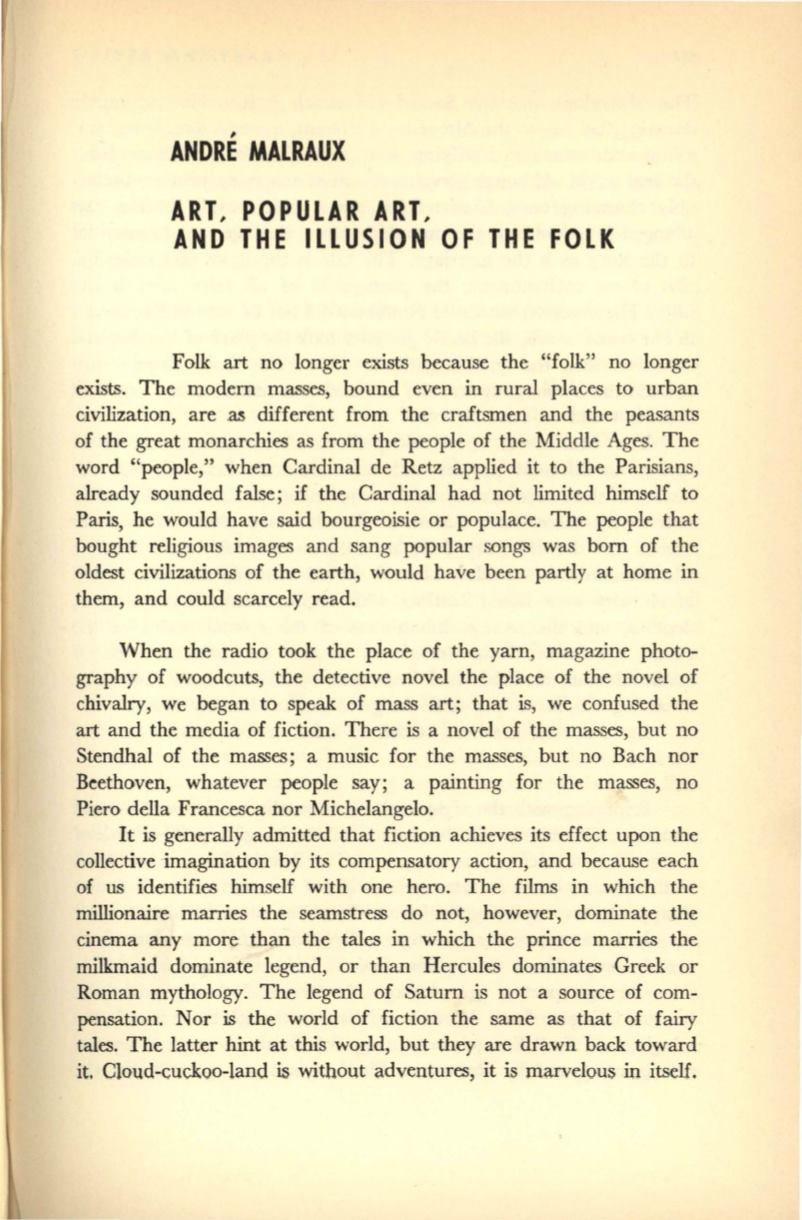
,
ANDRE MALRAUX
ART , POPULAR ART,
AND THE ILLUS I ON OF THE FO LK
Folk art no longer exists because the "folk" no longer
exists. The modem masses, bound even in rural places to urban
civilization, are
.as
different from the craftsmen and the peasants
of the great monarchies as from the people of the Middle Ages. The
word "people," when Cardinal de Retz applied it to the Parisians,
already sounded false; if the Cardinal had not limited himself to
Paris, he would have said bourgeoisie or populace. The people that
bought religious images and sang popular songs was born of the
oldest civilizations of the earth, would have been p.artly at home in
them, and could scarcely read.
When the radio took the place of the yam, magazine photo–
graphy of woodcuts, the detective novel the place of the novel of
chivalry, we began to speak of mass art; that is, we confused the
art and the media of fiction. There is a novel of the masses, but no
Stendhal of the masses; a music for the masses, but no Bach nor
Beethoven, whatever people say; a painting for the masses, no
Piero della Francesca nor Michelangelo.
It
is generally admitted that fiction achieves its effect upon the
collective imagination by its compensatory action, and because each
of us identifies himself with one hero. The films in which the
millionaire marries the seamstress do not, however, dominate the
cinema any more than the tales in which the prince marries the
milkmaid dominate legend, or than Hercules dominates Greek or
Roman mythology. The legend of Saturn is not a source of com–
pensation. Nor
is
the world of fiction the same as that of fairy
tales. The latter hint at this world, but they are drawn back toward
it. Cloud-cuckQo-land
is
without adventures,
it
is marvelQUS in itself.


